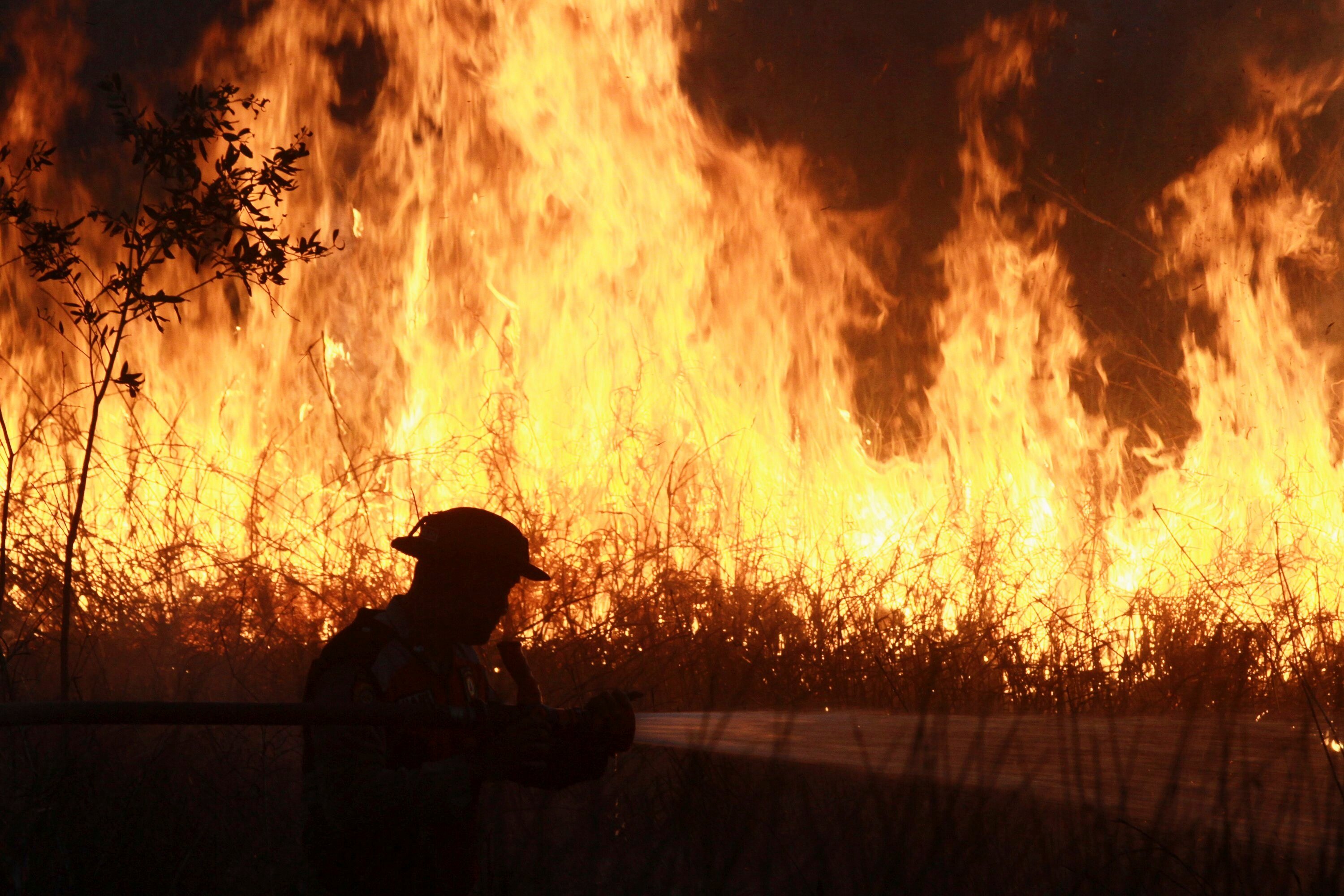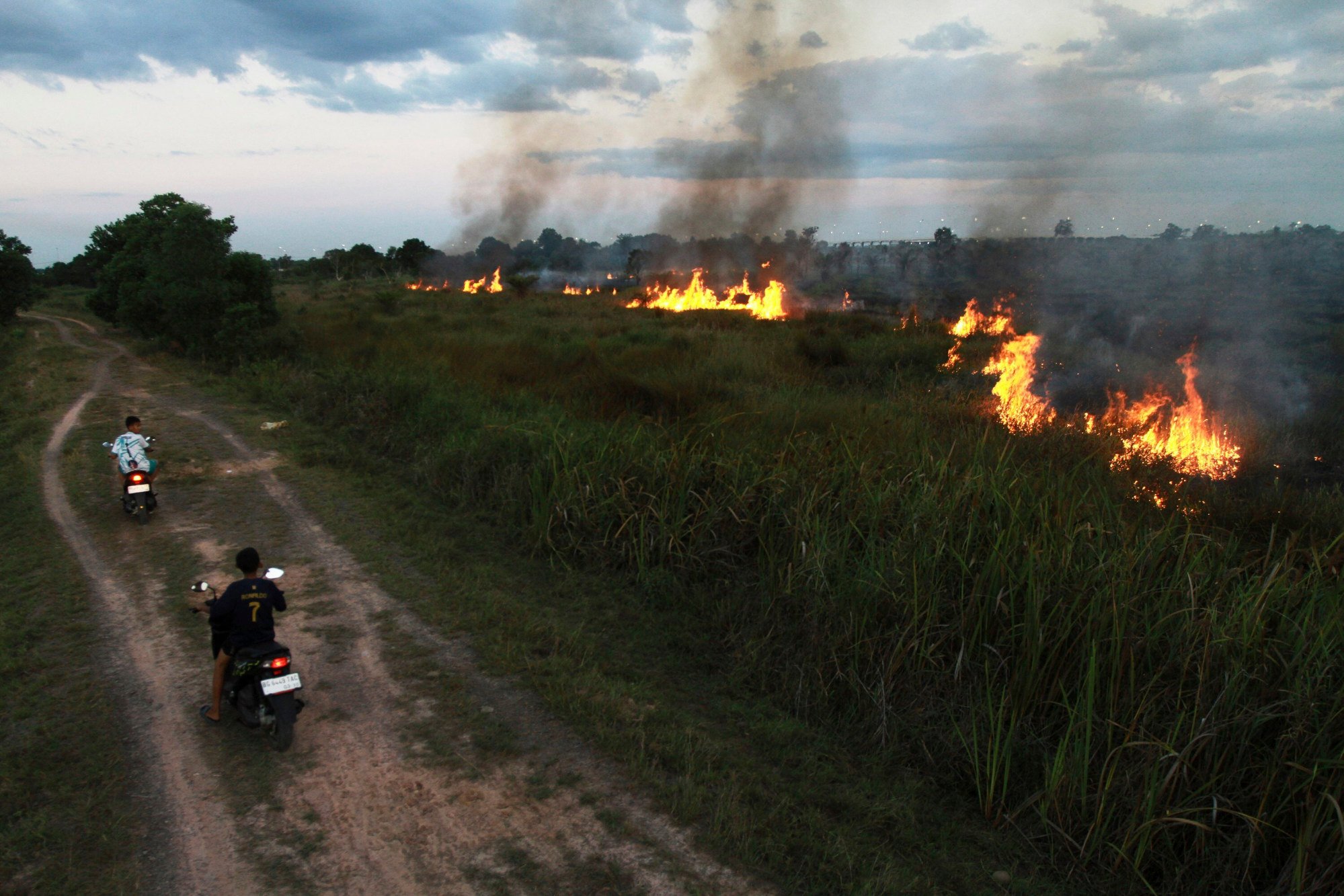Malaysian students allowed to stay at home as annual haze crisis begins
Air pollution readings are hovering around 90, with outdoor activities to be cancelled if the mark exceeds 100

Malaysia has advised parents in Kuala Lumpur and Selangor to keep their children at home instead of sending them to school as a toxic haze drifts over from seasonal fires in Indonesia.
The thick smog has cast a grey screen over the capital’s skyline, leaving many complaining of burning smells and eye and throat irritation in the latest episode of Southeast Asia’s recurring transboundary haze crisis.
Malaysia and Singapore are often the worst hit during the dry season, when forest fires and open burning in Indonesia’s Sumatra and Kalimantan blanket the region in smoke.
On Wednesday, Selangor state Public Health and Environment Executive Councillor Jamaliah Jamaluddin said parents concerned about the haze could opt to keep their children home until the situation improved.
“Principals and headmasters are also asked to monitor the current air pollution index (API) readings via the official website of the Department of Environment (DOE) to enable immediate and appropriate action to be taken,” Jamaliah said in a statement.
She added that schools must close if the API reached 200. Readings across the state are hovering around 90, with education ministry guidelines requiring all outdoor activities to be cancelled when the index exceeds 100.
“As of today, the Selangor State Health Department has informed that no cases of illness linked to the haze phenomenon have been reported in Selangor, and no cases of heatstroke have been recorded in the state,” Jamaliah said, adding that the public should remain vigilant.

Aside from Selangor, the neighbouring state of Pahang has also expressed readiness to close schools if the situation worsens.
The Asean Specialised Meteorological Centre (ASMC), which monitors haze in the region, identified smoke plumes emanating from hotspots detected in Malaysia’s Sarawak, as well as the northern and western parts of Kalimantan and the northern and central parts of Sumatra in Indonesia.
“Although showers may slightly improve the overall hotspot and smoke haze situation, isolated hotspots and smoke plumes may still develop over drier areas, with a chance of transboundary smoke haze,” ASMC’s latest report on Thursday warned.
The haze problem has been endemic since the early 1970s, with major crises in 1997–98 and 2015 causing huge economic damage and serious health problems, including increased hospital visits and early deaths, especially from breathing and heart issues, in Malaysia and Singapore.
Asean has tried to tackle the problem through joint efforts such as the 1997 Regional Haze Action Plan and a binding agreement signed in 2002, which all member states ratified by 2015. But enforcement remains weak.
Unhandled type: inline-plus-widget {“type”:”inline-plus-widget”}
Domestic laws are often lacking, and the Association of Southeast Asian Nations’ policy of not interfering in each other’s affairs limits pressure, while political tensions make cooperation difficult. Indonesia, in particular, has been criticised for delays and weak action.